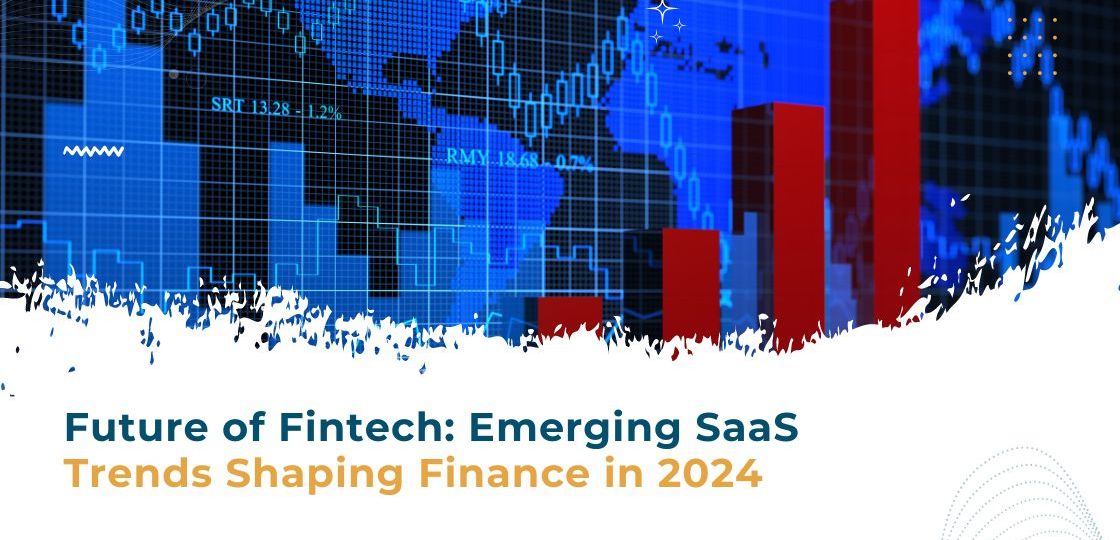
The year 2024 holds immense potential for software as a service (SaaS) enterprises. That’s because they overcome almost all obstacles with timely and accurate finance data. SaaS provides cloud-based application simplicity, removing expenses and installation hurdles so that companies can concentrate on improving their business, its prospects and user experience, including clients & consumers.
SaaS trends have proven incredibly successful for the finance sector. The successful deployment of security measures has been attributed to their strong implementation. Now these and many other financial SaaS applications are available to SMEs and non-financial businesses.
The Demand for SaaS Solutions will Surge
Businesses will gain in leaps and bounds from their SaaS applications as digital fintech innovation proliferates globally. That is, the customizability, affordability, versatility, security, dynamism, and compliance of a SaaS-based finance solution makes it increasingly a business necessity.
Further developments are seen in various SaaS versions of fintech innovation, including eKYC, card, remittance and banking as a service. Supplement this with e-billing, supplier invoice reconciliation, tax calculations and accounts package plug-ins the power of finance SaaS implementations is undeniable. So, given all this, there’s no doubt that SaaS has emerged as a forceful trend expanding out from the fintech industry.
Knowing the SaaS Trends from Fintech — Embedded Finance!
Experts anticipate that platforms that aren’t financially enhanced will increasingly incorporate financial services. Payment sites such as PayPal facilitate everyday payment experiences, and social media platforms are integrating payment features. In 2024, embedded finance, an increasingly popular idea, will provide software platforms, marketplaces and all businesses with revolutionary potential.
Complying with regulations, maintaining security and negotiating intricate regulatory environments are other obstacles. Businesses must choose whether to build, buy or collaborate to overcome these challenges. Given the complexity and expense of creating financial software with the help of software businesses with decades of experience, the strategic SaaS app method is clearly the most attuned to all business financial needs.
Forecasts indicate that generative AI and data analytics will drive significant progress in embedded finance apps in the future. What we’ll witness are platforms that will provide more and more specialized services and financial solutions that are suited to particular businesses and industry sectors.
Every Revenue Model is now Shifting to SaaS
The transition of fintech innovation businesses from traditional enterprise software solutions to new financial models, including SaaS, is rapidly increasing. That’s because interchange erosion reduces the interchange fees these apps make.
We anticipate this tendency will keep picking up momentum in 2024. In addition to offering accountability & transparency, it forms the basis for more income certainty and increasing client accessibility. The SaaS model assists broader fintech in all industries. The ability for businesses to recoup their software investment by expanding in novel experiences and pursuing innovative avenues is almost limitless.
Furthermore, companies may adapt flexibly to their growth because of the scalability of SaaS solutions.
Open Source SaaS Trends

What is the basis for fintech innovation in the modern digital economy? It is, without a doubt, performance, accountability, transparency and scalability. In recent years, things like SaaS solutions and open-source design have become important parts of the FinTech business. These are critical to the unrelenting shift to digital.
Now, browse the blog to learn how financial services embrace digital transformation! Online apps are made possible with the help of SaaS. As a result, you won’t have to install and maintain software; instead, you can download it online or connect directly through a myriad of API-connected finance apps.
Additionally, you are spared the burden of managing costly & complex hardware and software. Also, it enables companies to use cloud-based technology with plug-and-play options. As a result, all businesses with key financial needs will maintain competitiveness.
Thanks to the continuous updates provided by cloud-based SaaS systems, businesses can now take full advantage of the latest technological advancements through developments from FinTech SaaS.
DeFi or Decentralized Finance
We all can relate to the impact SaaS models had on traditional software. DeFi, or Decentralized Finance, is an emerging SaaS trend, all set to bring forth a revolution in the FinTech world in 2024. It strives to introduce smart contracts and user-friendly interfaces to simplify investments and access to trading platforms by eliminating the need for mediators.
This is the core of DeFi: it gives both consumers and businesses more control, transparency, and financial inclusion. With its creative, open, and permissionless approach, DeFi is poised to become a major trend in the financial industry as rules and technology advance.
Conclusion: Future of SaaS Trends in Fintech Innovation
With so many chances for innovation and cooperation, the SaaS sector is poised for great things. Future SaaS trends will be shaped by market trends, including integration, vertical SaaS and improved security measures, guaranteeing a dynamic and lively industry with increasingly widespread adoption.
SaaS solutions are in even more demand due to the quick growth of remote work and digital transformation, which makes cloud-based software solutions accessible to companies of all sizes. The SaaS market is robust and positioned for success despite possible obstacles, including growing competition and worries about data protection. Certainly SaaS has put to bed proprietary enterprise software solutions for all but the most demanding niche operations.
As we look to 2024 and beyond, the SaaS sector will continue to greatly expand and innovate. Indeed every business will need in due course to have any one or more financial apps & services that have been morphed from the dynamic developments of FinTech.
